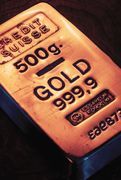Jun 12 2008
The four chemical elements cited most often in musical songs and compositions are, in this order, silver, gold, tin and oxygen, followed by copper and iron, according to a study carried out by Santiago Álvarez, professor at the School of Chemistry of the University of Barcelona, and recently published in New Journal of Chemistry.

To quantify the presence of these elements in the music market, Álvarez analysed the English and Spanish names of each element in a musical cyber store. The chemist explained to SINC that the results may include some redundancies due to different versions of a same piece - especially in classical music - and that some elements appear overvalued since they have several meanings (such as radio or indio in Spanish, lead in English or mercury (mercurio) in both languages). In any case the final aim of the study was not so much a comprehensive statistical analysis. but rather to "build bridges between science and music".
In general, with the exception of oxygen, the elements that appear most frequently in musical compositions are the metals seen most often over the history of humanity and daily life, comments Álvarez, "and silver and gold share the pedestal of popular imagination". Both appear in songs not only because they are components of a large variety of objects, but also because they are the symbol of wealth, luxury and power or due to the metaphors referring to their properties such as metallic shine.
Numerous classical composers have referred to gold or silver in their works such as Bach (Gold und Ophir ist zu schlecht, aria from the cantata BWV 64), Beethoven (Hat man nicht auch Gold beineben, from Fidelio), Dvorák (O Silver Moon, from Rusalka), or Wagner, in his opera Rhinegold, whose plot revolves around a golden ring and power and the accompanying curse. In the field of pop and rock music there is an abundance of groups that mention these precious metals in their songs: the Beatles, Bob Dylan, Genesis, Elvis Presley, The Rolling Stones, Sting, Spandau Ballet, Status Quo and many more.
Another metal with a significant musical presence is tin, which Krzysztof Penderecki uses as an instrument in his work Fluoresences together with pieces of wood and glass, a siren and a typewriter. It is also found in March of the Tin Soldiers by Tchaikovsky although perhaps the piece most related to this metal is Tin Roof Blues interpreted by legendary jazz figures such as Louis Armstrong, King Oliver, Sidney Bechet, Kid Ory or Tommy Dorsey. Curiously, in English the expression "tin ear” is used to refer to people who have little ear for music, observes Álvarez.
The chemical element often related to love is oxygen. So, for example The Spice Girls sing about a love that is "as essential as oxygen" in their song Oxygen, a name that is also used by the "Christian music" group Ávalon as the title for one of its albums. "To offset the hyperventilation with pop oxygen," continues the chemist, "one can relax by listening to the suite Oxygen by the classical guitarist Sulaiman Zai or the salsa aspect characterised by the rhythm of Oxygen by the Cuban American Willy Chirino". The French composer Jean Michael Jarre also composed and recorded what many experts consider as the foundational work of electronic music: Oxygène:
Iron also appears frequently in music, for instance, as "the iron sceptres" mentioned in one of the psalms of Handel’s Messiah or in his opera Esther. The association of this metal with what is more or less hard rock also appears in groups such as Iron Maiden or Iron Butterfly and in titles of musical pieces, for example, Judas Priest (Hard as Iron), Black Sabbath (Iron Man) or Dire Straits (Iron Hand)
Another element, boron, appears in a cowboy song, Borax Bill, "as boron is obtained from borax, for which there are many important deposits in California", explains Álvarez. Platinum, on the other hand, appears in the piece Density 21.5 by Edgar Varése, which refers to the density of this heavy metal (21.5 g/cm3). Lithium also gave rise to the title of one of the songs by the group Nirvana, whose leader, Kurt Cobain, used chemical salts of this element to fight against the depression that eventually led him to suicide. Furthermore Carbon is a Girl’s Best Friend, as Lynda Williams sings it, paraphrasing the famous Diamonds are a Girl's Best Friend, immortalised by Marilyn Monroe in the film Gentlemen Prefer Blondes.
Musical pieces that include various chemical elements at the same time have also been composed; for instance, we could mention "oxygen, nitrogen and argon" from the song Air by the group Mecano. Even among Anglo-Saxon chemists there is a classical piece titled The Elements by Tom Lehrer who interpreted it at the piano at Harvard University whilst reciting, one after the other, the first 92 elements of the periodic table of elements at a stratospheric pace with theatrical pauses for breath. This chemical table also served the cantaor Diego Carrasco to conjure up amusing play on words in The Chemist.
"The idea behind publishing this study arose during the events held in 2007 to commemorate the 100th anniversary of the death of Mendeléiev, the Russian chemist who created the periodic table of elements, clarifies Álvarez. The chemist concluded that an analysis of song titles and group names shows that "a non-negligible portion of scientific terminology has already been incorporated into popular tradition, although this is often used superficially".